For this assignment, I decided to read Ashley Hinck’s “Digital Ghosts in the Classroom” article, and chose to create a Twitter essay as my artifact. The main message I took away from this article was how students were struggling to demonstrate creativity when learning digital skills because they were stuck inside of a linear learning mindset.
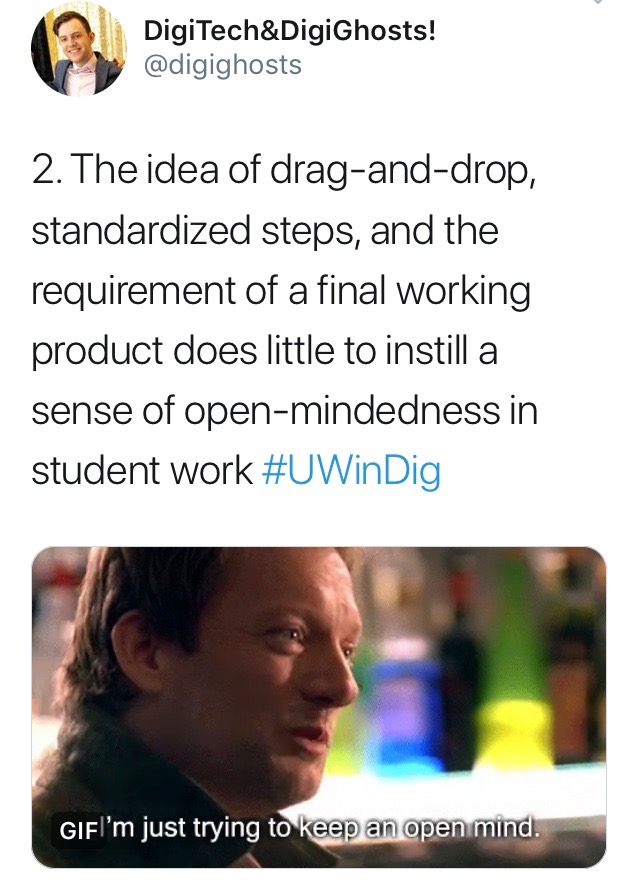
As I read through the article I was fascinated by this idea because I had never considered the sheer amount of digital tools that are based off of already made templates and worksheets that limit expression for the sake of “an easier time.”
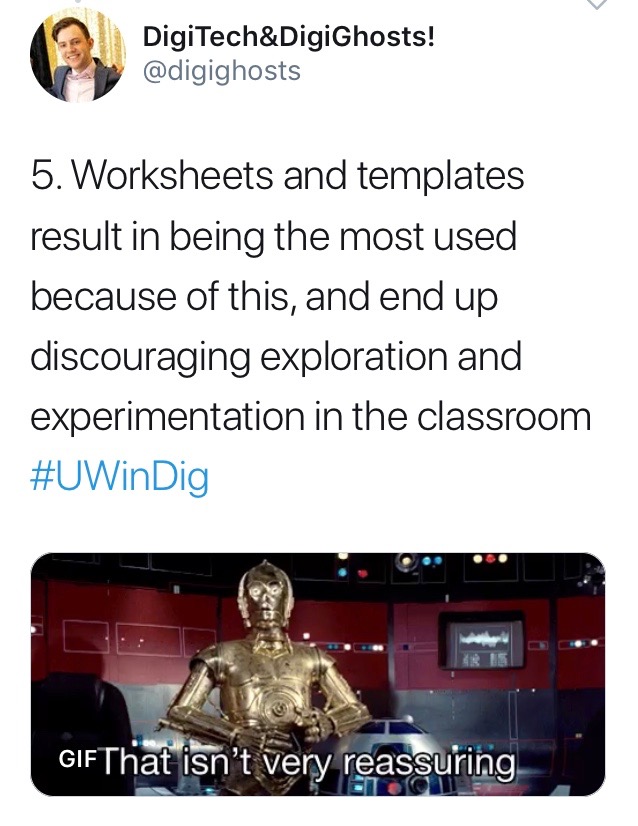
When I reflect back to the majority of my time in school using digital tools, I was never expected to realistically use something outside of PowerPoint, and was therefore never taught how I could potentially explore beyond the creative expectations that were set for me.
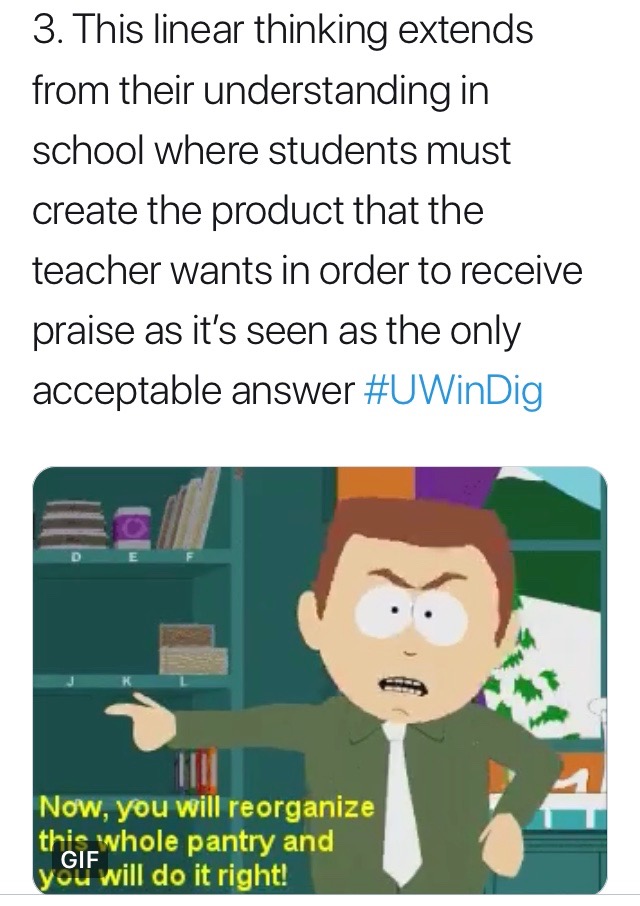
Hinck alludes that a major reason why students use these shortcuts is that their assumption of media is equal to their understanding of the school system where there is always a right answer, and that you earn the right answer’s through a basic step-by-step method.
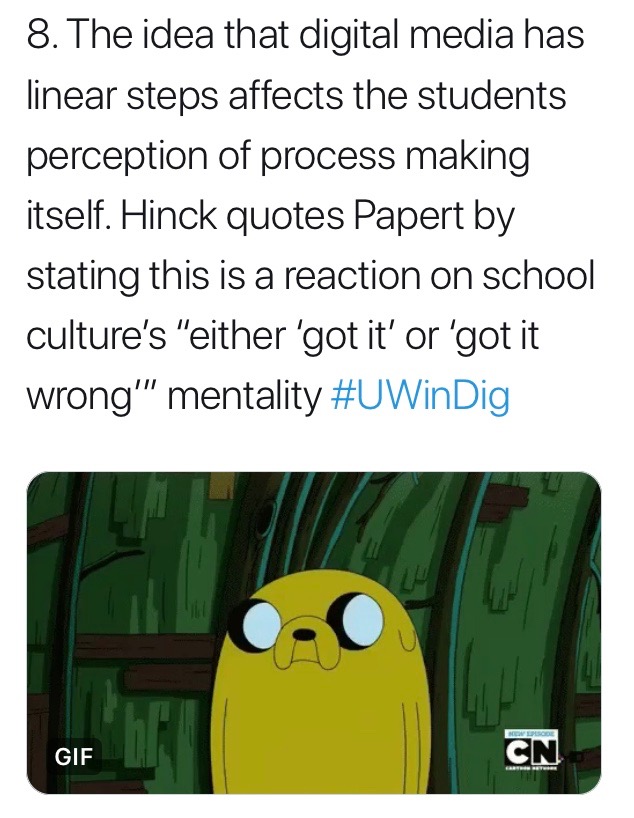
Students aren’t willing to commit to trial and error because being willing to fail has not been what they have been taught during their time in school. It is because of this that Hinck suggest that students start looking at school projects as works in progress so that they do not have to feel as critical when evaluating their work.
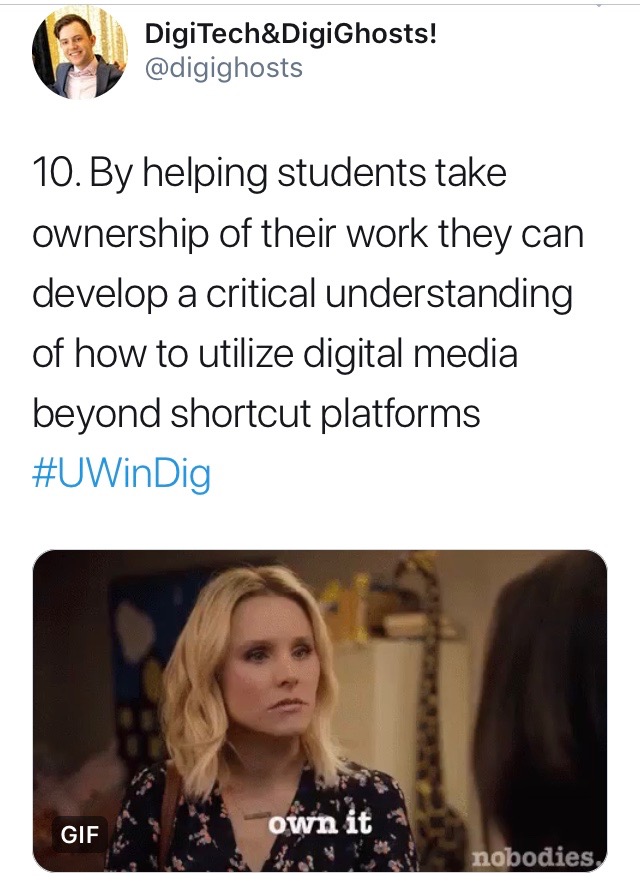
When students are willing to take risks they will find their best chance to go beyond linear thinking and have a greater sense of exploration in their work.
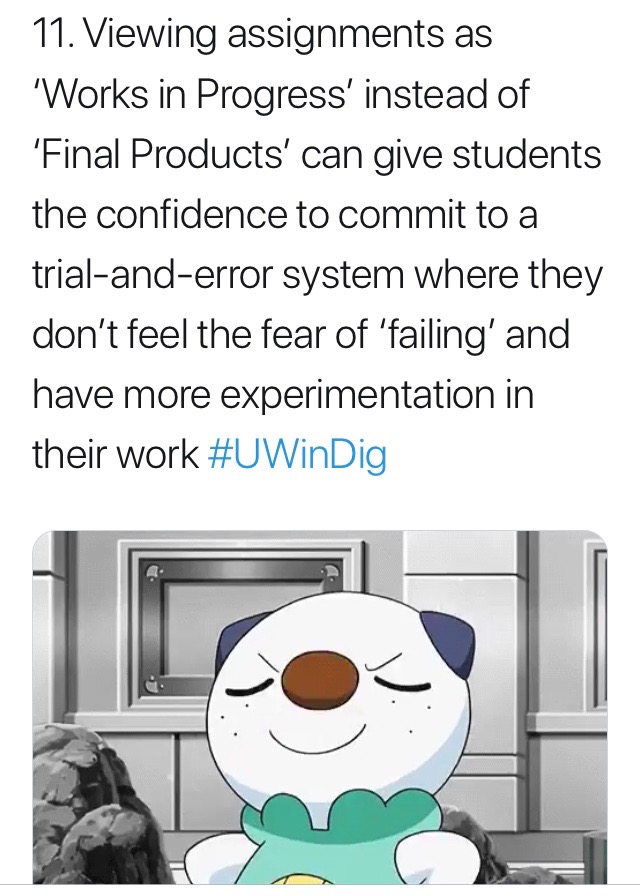
As I continue to develop my digital pedagogy, I want to incorporate a system where students understand that there is more than one way to solve a problem. By making troubleshooting and tinkering a common practice in the classroom students will not be as afraid to explore more in their creative practices, and become more engaged participants in their work.
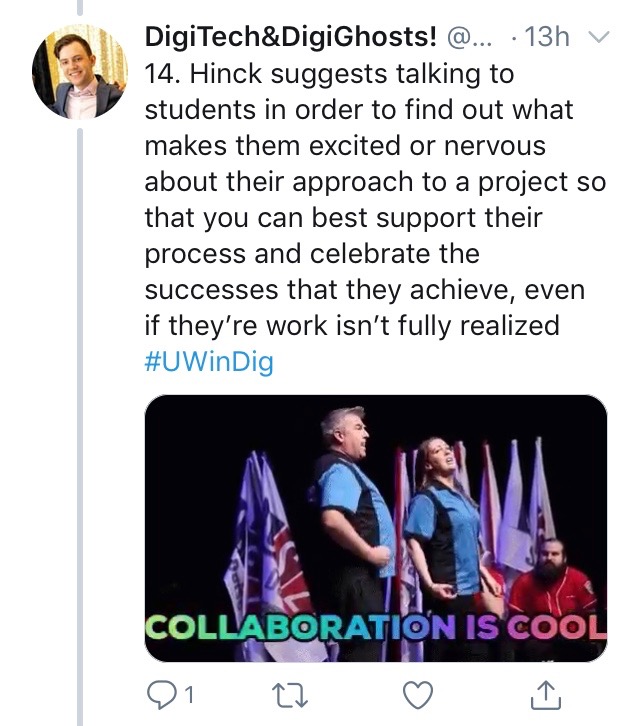
When a project is allowed to simmer and cook instead of coming out half-baked it’s a more rewarding result for both the student and teacher, and helps to further break the expectations that have maligned themselves in classrooms for years.
